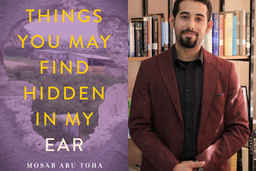While staying at his in-law’s village in Afghanistan in December 2001, Abdul Hamid Al-Ghizzawi, my client at Guantánamo, knew little of Bush and Cheney.
Later, when vigilante thugs turned him over to the Northern Alliance for an American bounty, Al-Ghizzawi knew nothing of Donald Rumsfeld, Alberto Gonzales, Jay Bybee, John Yoo or Matthew Waxman – the man who would become Al-Ghizzawi’s personal war criminal and who is now a professor at Columbia Law School.
So, it was understandable that when Al-Ghizzawi heard American troops were coming, he tried to get himself turned over to them. As Al-Ghizzawi later told me, he thought he would be safe with the Americans “and have rights” and be treated “with respect.” Al-Ghizzawi convinced the Americans to take him when they learned he spoke English. That was all the troops knew about him. Ignorance of who he was or why he was there, however, proved no impediment to torture.
In the early years, “the Americans treated me very brutally and disrespectfully, worse than the Northern Alliance … and the Northern Alliance was very bad,” Al-Ghizzawi recounted to me. “But now the torture is much different. Now the torture is my life every day in this prison, alone without my family, dying, with no rights and no charges.”
His American jailers spared Al-Ghizzawi the very worst of the worst in the long list of torture techniques now in use. He was not murdered or waterboarded. He did not have a razor blade taken to his penis, nor was he hung from the ceiling by his arms. One might describe Al-Ghizzawi’s torture as a kinder, gentler torture.
In American custody, Al-Ghizzawi was only beaten with chains; bound to chairs in excruciating positions for endless hours; threatened with death and with rape; stripped and subjected to body-cavity searches by non-medical personnel while men – and women – laughed and took pictures.
Among many other brutalities and indignities, Al-Ghizzawi was also posed naked with other prisoners; terrorized with dogs; forced to kneel on stones in the searing heat; left to stand or crouch for extended periods; deprived of sleep; subjected to extreme cold without clothes or covering; denied medical attention; and kept in isolation for years.
Again, as I said: a kinder, gentler torture.
Now, of course, Al-Ghizzawi knows all about Bush and his enabling minions. He knows that lawyers invented legal theories to justify the inhumane and indefensible treatment he received. He knows the role that lawyers such as Bybee, Yoo and Matthew Waxman played.
At the end of 2004, Waxman, then assistant secretary of defense for detainee affairs, who is currently trying to reinvent himself as one of the good guys, learned that Al-Ghizzawi and others were found not to be “enemy combatants” (EC) or threats to the United States by the military’s own combatant status review tribunals (CSRTs). Waxman set into motion a “do-over” CSRT, to make sure that Al-Ghizzawi’s suffering continue, lest Waxman and the Bush administration suffer the embarrassment of being exposed for holding numerous innocent men for years for no reason.
Note this declassified portion of an e-mail chain between Waxman and others:
“Inconsistencies will not cast a favorable light on the CSRT process or the work done by [Office for the Administrative Review of the Detention of Enemy Combatants]. This does not justify making a change in and or (sic) itself but is a filter by which to look … . By properly classifying them as EC, then there is an opportunity to (1) further exploit them here in [G]TMO and (2) when they are transferred to a third country, it will be controlled transfer in status.”
Every time I visit, Al-Ghizzawi asks me, “What happened to America?” I try to explain the unexplainable. I tell him that the American government now believes that torture is permissible; that we can hold people forever without charge; keep people in isolation for years; bar communications with family members; force-feed those who want to die and refuse to provide medical treatment for those who want to live. I explain that the American people, whose nation once stood as a beacon of human rights, neither care about this nor want to hear about it.
I also assure him that I am collecting the names of those responsible.
Attorney Seth Farber contributed to this article.

I hope you found this article important. Before you leave, I want to ask you to consider supporting our work with a donation. In These Times needs readers like you to help sustain our mission. We don’t depend on—or want—corporate advertising or deep-pocketed billionaires to fund our journalism. We’re supported by you, the reader, so we can focus on covering the issues that matter most to the progressive movement without fear or compromise.
Our work isn’t hidden behind a paywall because of people like you who support our journalism. We want to keep it that way. If you value the work we do and the movements we cover, please consider donating to In These Times.





